So, today I want to talk about one of the latest most popular plant – the Monstera Thai Constellation.
You may not have even heard of it or seen one since it’s a new plant, but it has become one of the biggest trends in houseplants recently and will probably remain popular for a long time to come!
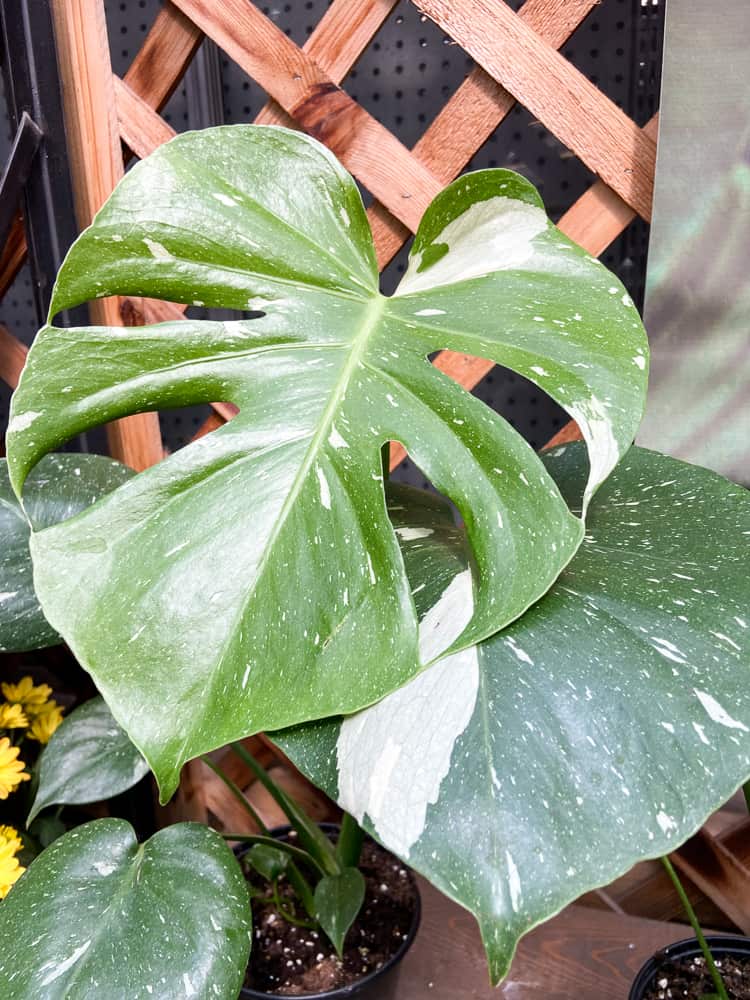
Table of Contents
Background and History
The Monstera Thai Constellations have the classic Monstera leaves, but they are variegated in a very unique pattern. The leaves have cream and green marbled patterns on them which is a mutation that is caused by a lack of chlorophyll.
Another fun fact about this beautiful plant is that it was actually created in a lab! It was cultivated in a tissue culture laboratory in Thailand from a parent plant Monstera Deliciosa (which is from Central America). This plant is known for its large, tropical leaves.
Because the cream colored splatter on the green leaves resembles a starry night sky, the name “Constellation” was given to this plant. How descriptive, no? In some ways, it almost looks like someone took a paintbrush and splattered them with cream colored paint over the green! No two leaves are alike making each plant one of a kind!
Common Names
This exotic plant is a cultivar of the Monstera deliciosa, which originates from Thailand. It goes by the names of both Thai Con Monstera and Variegated Monstera. It is also called the Monstera Thai Constellation, but some people just call it the Thai Con Monstera for short.
Toxicity
As with all monstera species, the Monstera Deliciosa Thai Constellation is toxic to humans and pets. This will mean you need to keep them away from your small children and pets for their own safety. The leaves won’t hurt your hands, but they can irritate or sting your lips, mouth or tongue if you touch them after touching the plant.
Thai Constellation Monstera Care
With proper care your Monstera Thai Constellation will grow happy and healthy so you’ll be able to enjoy those beautiful variegated leaves for a long time to come. Here’s what you need to know.
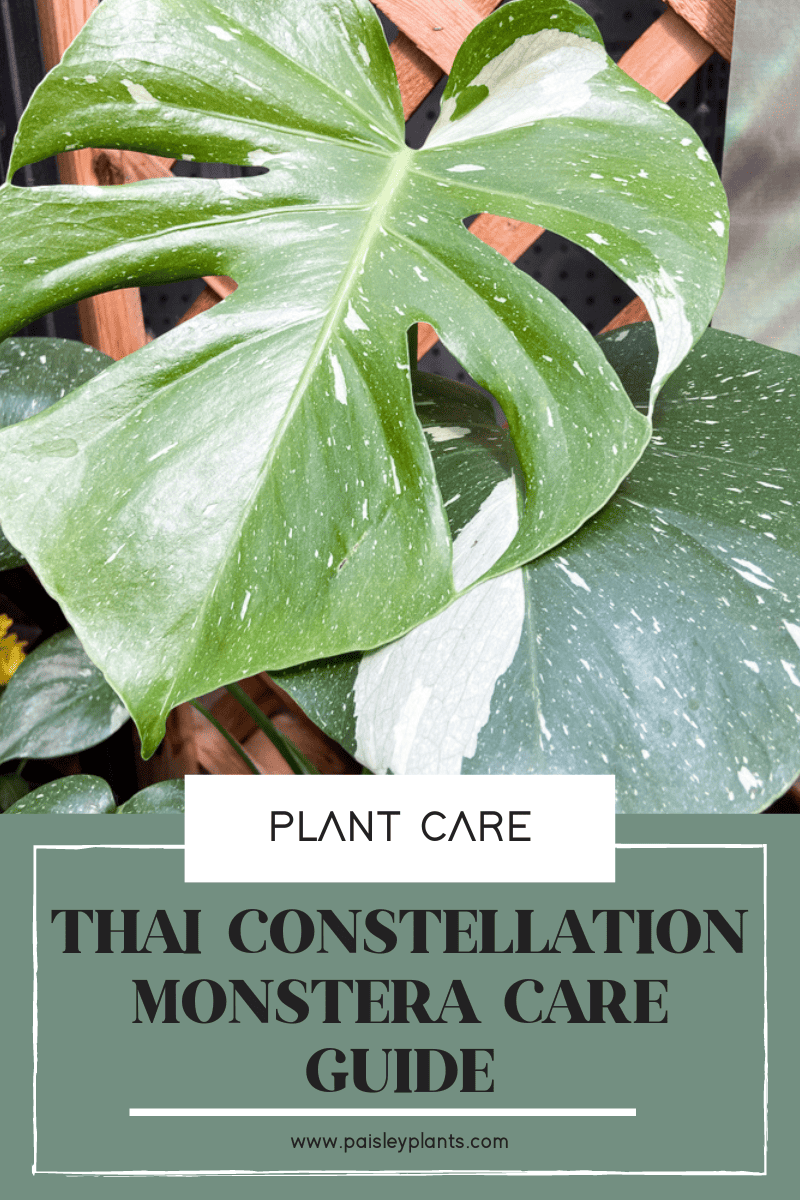
This post includes affiliate links.
Watering Requirements
For the most part, your Monstera Thai Con will want to be moderately semi-dry. You should check the top half of the soil to check the moisture level. If it is dry, you will want to water it.
Give it a good soaking, but just be sure the excess water drains well through the soil and through the drainage holes on the bottom of the pot so it doesn’t make the soil soggy.
It is always better to err on the side of under-watering than overwatering with this plant. Overwatering can lead to root rot or other types of problems for your plant. Be sure your pot has good drainage and this should aid in keeping the soil semi-dry after watering.
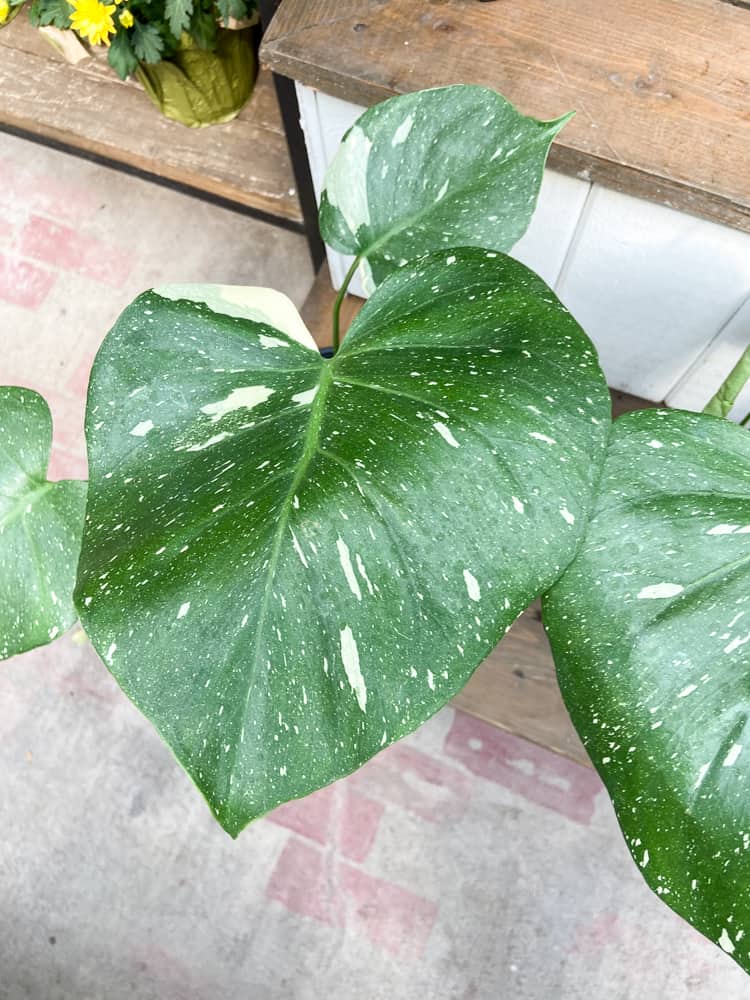
Light Requirements
The best light for your Thai Con Monstera is approximately 6-8 hours of bright, indirect light each day. This could be in a south or west facing window. You also will want to be sure to keep your indoor plants are rotated on a regular basis so they grow fully and doesn’t become lopsided.
One thing to remember about this plant – the variegated sections lack chlorophyll which means they can’t absorb light and are more photo-sensitive. Variegated plants in general need to work harder to photosynthesize. Low light conditions are not recommended.
If necessary, you can add a grow light to help your plant grow properly if you don’t have enough light. Be sure to keep your plant away from direct sunlight as this will not help your plant. Also, be sure to keep your plant away from air vents or too close to any window drafts.
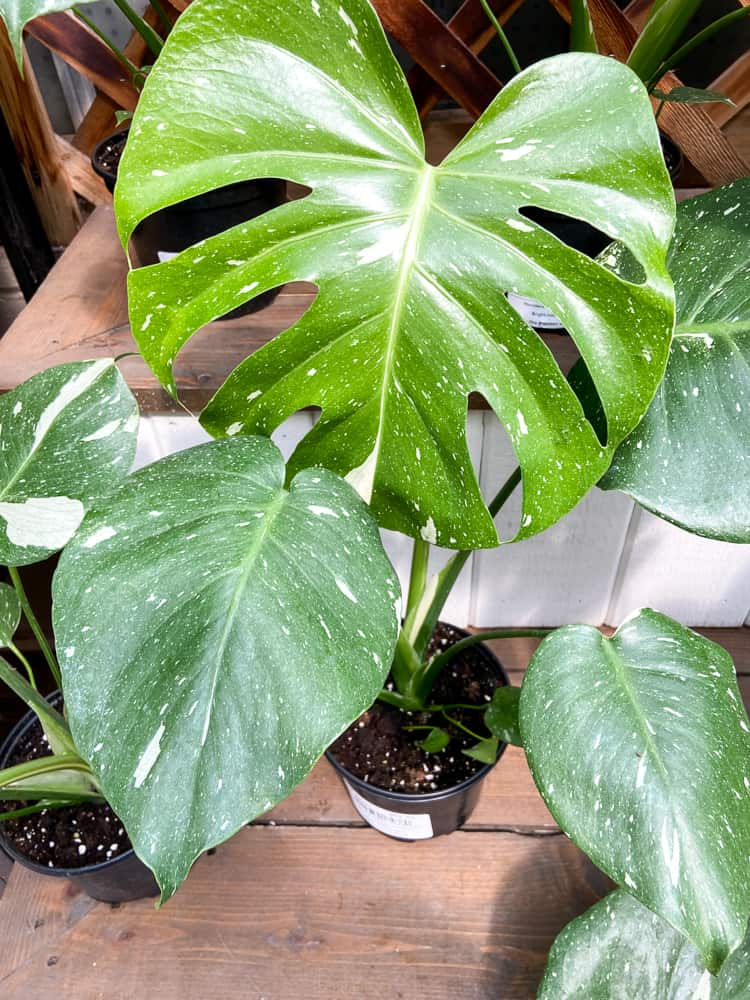
Soil Requirements
Keep it light! By that, I mean use a light, well-draining soil. This will mean not using just any old potting soil. You’ll want to be sure to choose a pre-made aroid mix. This can be a combo of orchid bark, fern fiber, pumice, horticultural charcoal, organic matter and more. There are many commercially available.
Be sure that you don’t use the mixes with soil or peat. These can lead to root rot very quickly. Think more of well draining mediums that include orchid mix, succulent mix, bark, perlite, fern fiber, pumice, etc. If you do have very dry conditions, you will only ever want to add about 20% potting soil to your mix. No more than that, however!
Fertilizer Requirements
When it comes to fertilizing your Thai Constellation plants, you want to be careful. Because it is a slow grower, you don’t want to over fertilize. You don’t want to starve it either. Just go easy when you do fertilize. This plant is more salt sensitive than others since it is a slow grower, so keep a careful eye on how you fertilize.
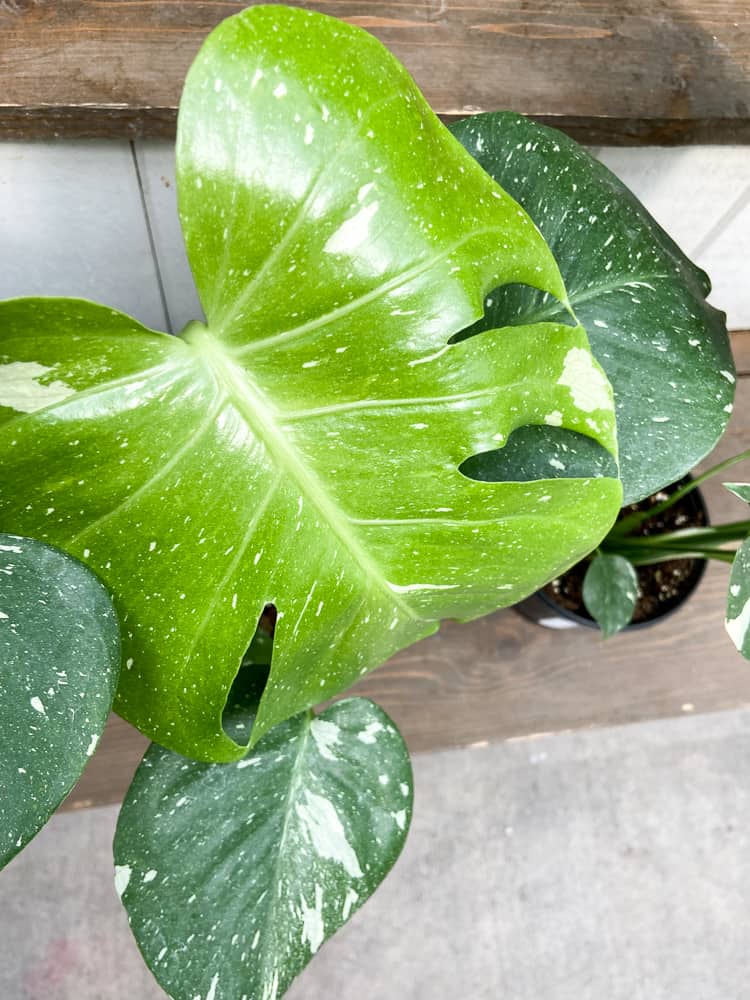
There is actually a fertilizing mantra called the “Weakly Weekly.” This might sound like you need to feed your plant a weak solution weekly, but that is not what it means. It just means that you feed it less every time you water. The reason you will do this is so that you avoid fertilizer burn and also will reduce the risk of nutrient deficiencies by increasing how often you feed your plant.
You will need to follow the instructions on the fertilizer you use. Some will tell you to feed ‘every second water’ or ‘once a month.’ If it recommends every second water, then you need to halve the dose of fertilizer. If the label says once a month, then quarter it. You get the picture.
Since some fertilizers have very tiny doses, it is easier to change the amount of water instead of the dose. You don’t need to do both, however. You can check out this method online if you want further clarification.
Also remember to only fertilize during the growing season and not during the winter months.
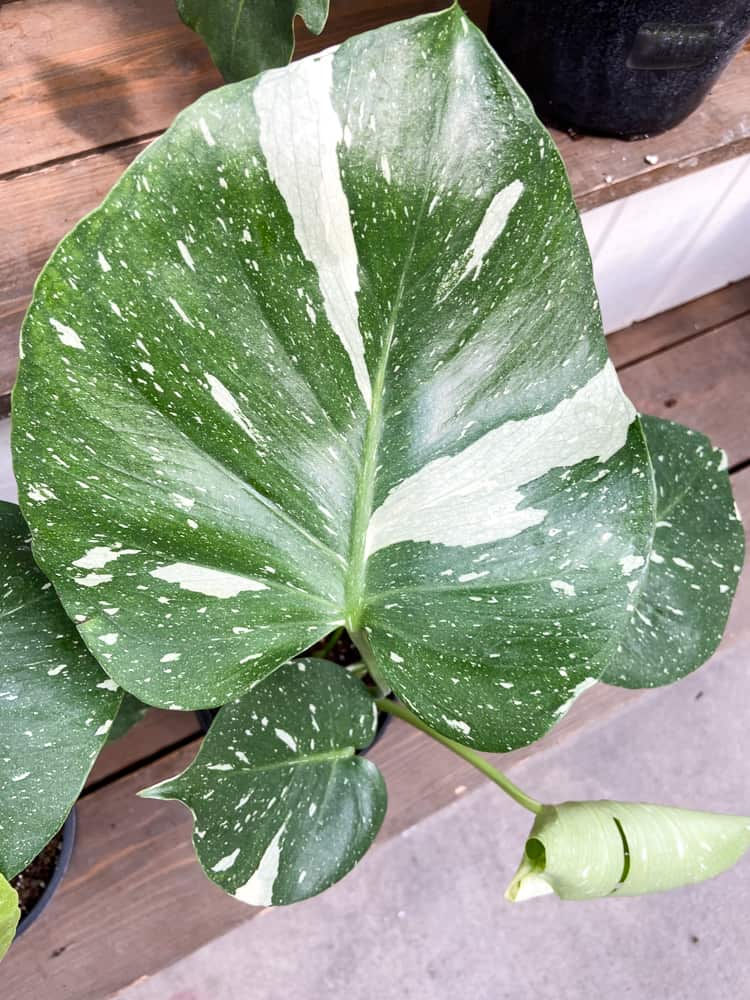
Temperature and Humidity
The optimum temperature range for your Monstera Thai Con is between 65 and 85 degrees F. Any temps lower or higher will slow its growth or stop its growth altogether.
It can withstand higher temps, but that would normally be if your plant is an outdoor one. Also, you will need to ensure it is not kept in temps below 50 degrees F since that will completely stop its growth. These are tropical plants after all!
As far as humidity goes, it will do well in high humidity levels of between 60% and 80%. When put in a higher humidity environment it will be more likely that your Monstera Thai Con will grow even more rapidly.
Pests and Diseases
Even though the Monstera Thai Con is a relatively hardy plant, it is not immune to pests and diseases. There are few common pests that may become a problem, so you will need to be diligent in caring for your plant to keep them at bay.
Spider mites can be identified on your plant by the fine webbing they create on the leaves. You will need to use either neem oil spray or insecticidal soap to control them. First of all, you should isolate your plant from any other houseplants. Then treat it. Follow the instructions on the bottle of soap or neem oil for how to use it.
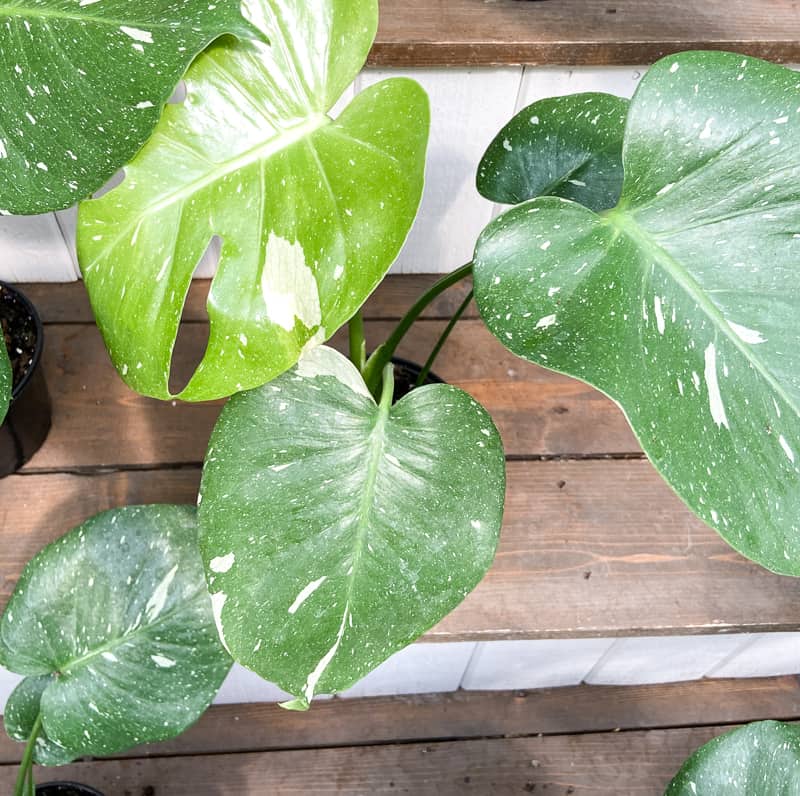
Mealybugs can also be found on your plant. They are small white, cotton-like bugs that cluster in leaf nodes and stems. You will need to remove them manually using a cotton swab dipped in rubbing alcohol. As mentioned above, you should first isolate your plant from your other houseplants at the first sign of infestation so you can treat it properly.
Root rot is also a common problem. This can be because of overwatering or improper drainage. Be sure your plant is potted in well-draining soil and only water when necessary. This is an easy problem to avoid as long as you keep a regular watering schedule.
Leaf spot can occur when there is poor air circulation around your plant or it is overwatered. It will show up as dark, water-soaked spots on the leaves and is caused by a fungal issue. Avoid overwatering and clustering your plants together and this should help prevent this problem.
Pruning and Repotting
Removing old, yellow or drooping leaves will help maintain your plant’s health and keep it looking good. It will also improve air circulation and release nutrients for younger leaves.
This plant is a slow grower. It will normally grow about one or two feet each year. This will mean you only need to repot it once every two years. The new pot should be two to three inches larger in diameter than the root ball of the plant.
When you do decide to repot your Monstera Thai Con, be sure you use the proper soil and that it is new. Remember that any soil your plant has been living in for years has lost its nutrients and all these will need to be replenished for a strong, healthy plant to continue to grow!
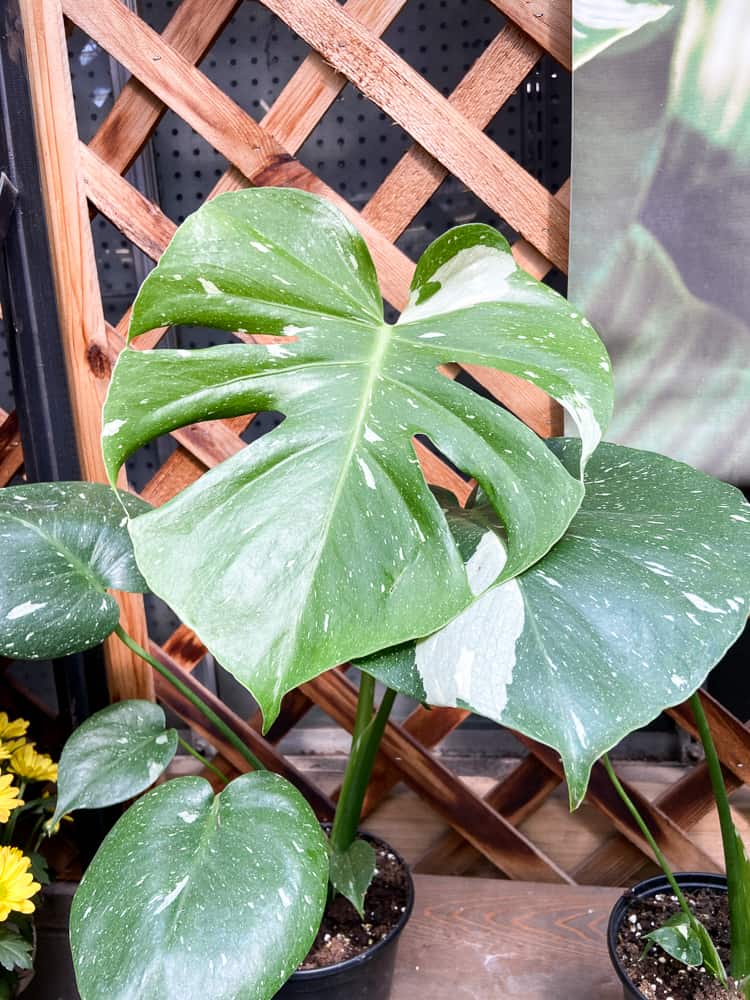
Common Problems
One common problem can be leaves turning yellow. This is most of the time because of over-fertilization or pests or fungal disease issues. As discussed above, you can eliminate this problem by not applying too much fertilizer, watching your plant for pests and diseases. Regular plant care is a good way to eliminate this problem.
Another common problem is leaves turning brown. This can be from overwatering your plant, a lack of humidity, or too much direct sunlight.
Another problem is that your plant is very sensitive to the chemicals in normal tap water. This can be eliminated by allowing your tap water to sit 24 hours prior to using it to water your plant. You can also use distilled, filtered or rain water.
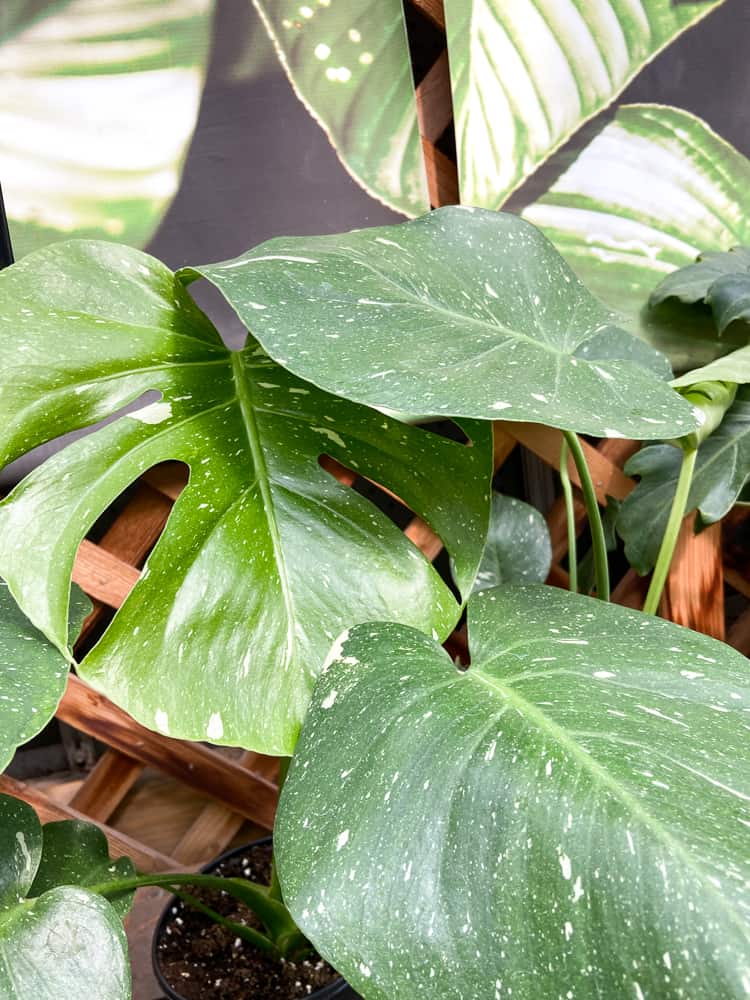
Where to Buy
FAQs
This is a relatively new hybrid plant that was developed in a lab in Thailand. It is still quite rare and is not widely available yet. People have paid as much as $1,000 for a mature Thai Con! It may begin to become more popular and the price may come down at some future date, but that remains to be seen!
This can be due to several reasons, one of which is low humidity. It can also be due to lack of soil moisture content, low light, and pest infestations. You will need to check all of these factors to determine if one of them is the problem.
Yes, you can use a moss pole, but don’t have to. If you do, however, be sure not to keep it too moist. You should be misting it twice a week, but don’t soak the pole too much. You want to avoid having it too wet and also want to keep from getting fungus gnats.
In Conclusion
If you are one of the lucky houseplant enthusiasts who has been able to find and purchase one of these stunning beauties, good for you! If not, maybe the price point will come down soon.
There are even reports that a few years ago when the plant was first released, some people camped out overnight to buy one of these plants and also paid high prices!
Hopefully, as the Monstera Thai Constellation becomes more and more popular, the price will decrease and the availability will also become better. As always, keep on growing!
Keep learning about Monstera plants by checking out 16 types of monstera plants or check out other types of variegated monstera plants here!
